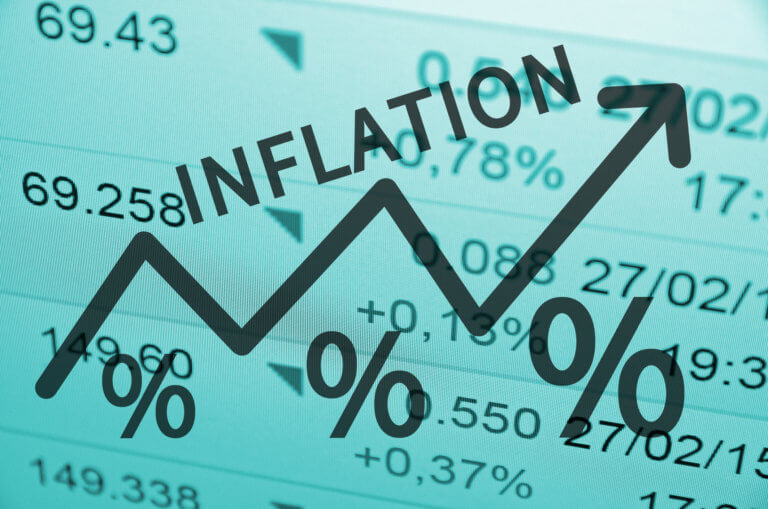High Inflation Adjustments To Your 2023 Tax Bill – by Johan Vako

High Inflation Adjustments To Your 2023 Tax Bill – by Johan Vako, Financial Analyst

Johan Vako is a financial analyst at Wall Street Alliance Group.
It has been a concerning year for consumers as we’ve watched inflation rising across the U.S.,
with higher prices affecting every area of people’s purchases, from gas to groceries. This
increase has curtailed the spending power of most Americans, and while inflation is never a
circumstance to be welcomed, there is some small comfort in the anticipation of a small
kickback in terms of lowered tax bills.
Next year will bring changes in many tax provisions when the IRS makes its annual inflation
adjustments for 2023. While these adjustments are usually small, because of the consistently
high inflation rate over the past several months, analysts believe that these upcoming changes
will be more impactful on taxes for 2023. Here are some examples of provisions expected to
change next year and the potential advantages they could create:
- Automatic inflation adjustments will raise the threshold for income tax brackets. For
2023, the top bracket limit is expected to increase by almost $50,000 for a married
couple, meaning a combined income of $693,750 would put them into the top bracket.
The top 37% tax rate will apply to individuals with incomes starting at $578,125. The
increase across all tax brackets will be around 7%. This is a large jump, considering it
was a 3% increase for 2022.
- Standard deduction (the deduction allowed for taxpayers who do not itemize deductions
on tax returns) amounts will also probably increase in 2023. The anticipated increase will
move from $25,900 for 2022 to $27,700 in 2023 for taxpayers filing jointly.
- Contribution limits for retirement accounts may be raised. This would allow for greater
tax advantages for those contributing, with more savings for those who maximize their
annual contributions. Employer-sponsored retirement accounts, including 401k plans,
use a particular formula to determine inflation-related increases. It’s expected that the
maximum contribution amount for retirement plans will increase by $2000 over 2022 to a
max of $22,500 for 2023. For workers who are aged 50 or over, the catchup amount will
rise from $6500 to $7500, if not more. For IRA accounts, which determine inflation-
related increases using the usual IRS formula, the current limit of $6000 will likely
increase to $6500 for 2023. Flexible spending accounts for healthcare are also expected
to experience a limit increase, from $2850 to $3050 for tax year 2023.
- For those looking to shelter assets from estate taxes that will be levied against their
heirs’ inheritance, the federal estate tax exclusion amount will likely be raised as well.
From the current $12.06 million amount, it is expected that the amount will go up to
$12.92 million for tax year 2023. This would allow a married couple to protect nearly $26
million from estate taxes.
- Tax-free gift limits are also expected to increase for 2023. Wealthy individuals may use
this amount to gift assets to their children or other beneficiaries without the givers or
recipients having to pay taxes on the amount. The current limit for tax-free gifts is
$16,000 for a married couple. In 2023, it is expected that the amount will jump to
$17,000.
- While the current annual child tax credit of $2000 isn’t adjusted for inflation, the
additional child tax credit that is listed as refundable even for those taxpayers who are
not required to file taxes is adjusted. There is an expected increase from $1500 to $1600
next year to account for inflation. However, the income limits that determine a taxpayer’s
child tax credit will not be increased to account for inflation at this time.
- There is also an expected climb in Social Security benefits for seniors. This increase is
anticipated to be larger than the potential changes to tax provisions due to inflation. At
this point, analysts expect there to be an approximate 8.7% increase in monthly
payments to seniors from Social Security. This is due to an increase in the estimated
base wage tax level used to calculate Social Security benefits for recipients.
To make the adjustments that will affect taxes, the IRS utilizes formulas and methods that are
established in federal law. This is why the amounts may look different from the type of inflation
numbers that we see in news headlines and articles. Tax-provision adjustments use a particular
index to measure inflation which is called the chained consumer-price index. This index
analyzes not just what is purchased across the nation, but specifically takes into account the
different items individuals choose to purchase as prices increase and they may be forced to
change their regular shopping habits.
Using this index, the IRS examined the average of the index from September 2021 to August
2022 to determine precisely what the adjustments for 2023 will be. The increases discussed
here are estimates proffered by analysts; the actual IRS tax provision adjustments will be
announced either in October or November. In turn, these adjustments will be in effect for the
2023 tax year. It’s important to understand the types of changes that could affect your taxes to
ensure you speak with your tax professionals to be in the best position to take advantage of any
adjustments that could benefit you.
Securities offered through Securities America, Inc., member FINRA/SIPC. Advisory services
offered through Securities America Advisors, Inc. Wall Street Alliance Group and Securities
America are separate companies.

